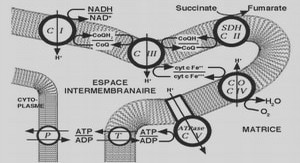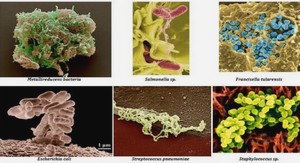Science of the Total Environment
Introduction
Evidence for changing dimate, associated with higher atmospheric concentrations of greenhouse gases, continues to increase. The years 2014 and 2015 are currently considered the wannest years in Europe since instrumental records began, i.e. > 1.1 •c warmer than the preindustriallevel (EEA, 2017). For these years, the exœptional beat covered the whole summertime with mean precipitation Uune to August) significantly decreased by up to 20 mm per decade. The series of sommer heatwaves affecting Europe since 2003 has also contributed to severa! intense tropospberic ozone (03) episodes. In 2015, 18 of the 28 states of the European Union (EU) and four other European countries outside the EU registered concentrations above the EU ~ target value for the protection ofhuman health (EEA, 2017). Due to favorable meteorologic.al conditions, both drought and ~ are very likely to occur simultaneously. As a general rule, seasonal drought is typically assodated with high insolation, and such conditions are condudve to the photo-oxidative formation of high 03 levels (Butkovic et al., 1990). In addition, arise in temperature significantly increases the emission rates of most biogenic volatile organic compounds that can contribute to 03 production (Avery, 2006). linder drought, plants usually suffer from the impairment of many physiologic.al and biochemic.al proœsses, such as (i) alteration ofphotosynthetic performance, (ü) cell dehydration, (ill) bigh production of reaction oxygen spedes (ROS) and, finally, (iv) early senescence and/or leaf necrosis (Chaves et al., 2003). Similar effects have also been attributed to 0 3 (Cotrozzi et al., 2017a; jolivet et al~ 2016). A combination of drought and ~ can induce responses considerably different from those observed when each stresser is applied independently (Bohler et al., 2015). lnterestingly, the effects of drought and~ can be antagonistic, so that a simultaneous occurrence may be partially benefidal to plants. The most common combined response, in fact, is that drought tnitigates the negative effects of 0 3, basic.ally by closing stomata and th us redudng ~ uptalœ into the plant (Pollastrini et al~ 2013; Gao et al., 2017). However, other results suggest that drought can exacerbate 03 damage: Alonso et al (2014) reported that the combination of both stressors caused further decreases in accumulated aboveground biomass in two subspecies of QJlercus ilex. lt appears that the combination of drought and 03 is highly dependent on (i) the severity and length of occurrence of both stress factors and (ii) the balance between stomatal 03 uptake (i.e., Phytotoxic 03 Dose, POD) and detoxification capacity of foliar cells (Dizengremel et al., 2013; Bohler et al., 2015 ). Sorne studies have investigated the effects of combined drought and ~ exposure on plant metabolism, espedally in trees ( see also Pollastrini et al., 2013; Cotrozzi et al., 2016; Yuan et al., 2016; Gao et al., 2017; Cotrozzi et al, 2017b ). However, none of them investigated antioxidant molecules and/or physiologic.al mechanisms. Whereas 03 itself induœs production of ROS and leads to a strong ROS accumulation, physiological responses to drought mostly use ROS as intemally produced signalling molecules (Reddy et al, 2004 ), and severe drought may lead to photooxidative stress (Czamocka and Karpinsky, 2018). Consequently, accumulation of ROS is likely to be considerably higher during 0 3 stress, and more closely located to chloroplasts under drought stress. Recently, Cotrozzi et al. (2017b) documented that hydrogen peroxide (H ~) and superoxide anion ( 02) were directly involved in the Oroxidative burst induced by an intense episode of~ exposure (200 ppb for 5 h) in three– year-old Q, ilex saplings. By contrast, H2~ content did not change in plants subjected to drought (20% of the effective daily evapotranspiration, for 15 days). Such differences in ROS extent dynatnics in relation to the stress factor suggested a complex network of events in signal transduction, involving other molecules (e.g., salicylic and jasmonic add) and proœsses (e.g., praline biosynthesis). Oaks (belonging to the genus Quercus) are widely distributed trees within the Mediterranean area and are able to cope with several environmental stressors due to the high plastidty of their phenotypic and physiological traits (Cotrozzi et al., 2016). Holm oak (Q, ilex) is likely the most widely studied Mediterranean evergreen tree species and bas been defined as « drougbt avoidant » (Bussotti et al., 2002) and « ~ tolerant » (Cotrozzi et al., 2018a; Hoshika et al., 2018). Downy oak (Q, pubescens) is a typical Mediterranean dedduous tree distributed in Southem Europe and bas been defined as « drougbt- » (Curtu et al., 2011) and « 03-tolerant » (Cotrozzi etal~ 2018a; Hoshikaetal~ 2018). Pedunculate oak (Q, robur) is one of the basic species in deciduous broadleaved forests of Europe and bas been defined as « moderately drougbt-tolerant » (Vranckx et al., 2014) and « Orsensitive » (Hosbika et aL, 2018). The aim of the present study was to assess the combined effects of drought and 03 exposure on the antioxidant metabolism of three oak species showing different water use strategies and 03 sensitivities, exposed for one growing season to three levels ofwater availability and three Ievels of 03 in an 03 Free Air Controlled Exposure (FACE) facility. Spedfically, we asked the following questions: (i) How much ROS are induced by realistic ~and water stress levels? (ü) Which antioxidant mechanisms are activated in response to individual stresses and to the combination of the stressors at different intensities? (ill) Are metabolic responses markedly species-specific? (iv) Are antioxidative metabolism and stomatal uptake of~ correlated? We postulated a protective effect of drought against ~ and that the interactive effects ofboth factors may depend on plant spedes.ln particular, we hypothesized that the evergreen tree spedes (which usually inhabits limiting environments) will have a greater tolerance to drought and 03 exposure than the dedduous ones ( characterized by shorter leaflifespan), due to its stronger need to protect its long-lived leaves from different environmental eues. ln a previons worlc, Cotrozzi et al. (2016) demonstrated that Q, ilex was able to successfully cope with severa! stressors due to the high plastidty of morpbo-anatomic.al, physiologic.al and biochemical traits.
Milteri.Jls iUid metbods
Plant material and experimental design
At the beginning of autumn 2014, two-year-old saplings of Q, ilex, Q, pubescens and Q, robur were transferred from nearby nurseries to the 0 3-FACE fadlity of Sesto Fiorentino, Florence, ltaly (43.48’59sN, tt•t2’01″E, 55 rn a.s.l.), wbere the experimental activities were conducted. The plants were established into 1 0-L pots containing peat: sand:nursery soit (1:1:1 in volume) and maintained onder field conditions until the beginning of the treatrnent Uniform-sized plants were selected and grown onder the combination of three levels of 03 ( 1.0, 1.2 and 1.4 times the ambient air concentration, denoted as M, 1.2 x M and 1.4 x M, respectively) and three levels ofwater irrigation [100, 80 and 42% of field capacity on average, denoted as WW (weil watered), MD (moderate drought) and SD (severe drougbt), respectively] from 1stjune to 15th October 2015 (4.5 months). Adetaileddescription of the 0 3 exposure methodology is available in Paoletti et al. (2017). The maximum hourly ozone concentrations were 93 ppb in M, 111 ppb in 1.2 x M and 123 ppb in 1.4 x M, respectively, throughout the experimental period. AOT40 (Accumulated exposure Over Threshold of 40 ppb) values during the experimental period were 17.8ppmh,29.7 ppm h and403 ppmh inM, 1.2 x Mand 1.4 x M, respectively. Biomass results from this experiment were used for assessing 03 risk in a previous paper (Hoshika et al, 2018), where further details on 03 metrics are also available. The amount of irrigation was related to the soit field capadty, i.e. the maximum volume of water that was retained into the soit of the pots [volumetrie soit water content was measured in the root layer by EC-5 soil moisture sensors equipped with an EMSb data logger, (Decagon Deviees, Pullman, WA, USA), Hoshika et al. (2018)]. Three replicated plots (5 x 5 x 2 rn) were assigned to each 03 treatrnent, with three plants per each combination of spedes, ~leve] and water irrigation. At the end of the experiment, the first mature ( fully expanded) top leaves of ail three plants per plot (one leafwith 5th to 8th arder per plant) in each 0 3 x irrigation 392 E.Pelkgrini et aL 1 Scienœ of the Total EllllirDnment 647 (2019) 390-399 treannent were gathered, divided into aliquots ( obtained from each combination of spedes, ~levet and water irrigation per plot), immediately frozen in liquid nitrogen and stored at -80 ·c until biochemical analyses were done. Sampling was performed from 11 :00 am to 1:00pm.
Oxidative damage and H~2 content
Oxidative damage to membranes was estimated in terms of lipid peroxidation by determining the malondialdehyde (MDA) by-product accumulation, according to the method of Guidi et al. (2017). Samples ( 40 mg fresh weight, FW) were extracted with 1 ml of 0.1% (w/V) trichloroacetic acid. The determination was performed with a spectrophotometer (6505 UV-Vis,jenway, UK) at 532 and 600 nm. ~ content was measured fluorometrically using the Amplex Red Hydrogen PeroxidejPeroxidase Assay Kit (Molecular Probes, Invitrogen, carlsbad, CA. USA), according to Cotrozzi et al. (2017b ). Samples (30 mg FW) were extracted with BOO JlL of20 mM potassium-phosphate (K-P) buffer (pH 6.5). The determination was performed with a fluorescence/ absorbance microplate reader (Victor3 1420 Multilabel Counter, Perkin Elmer, Waltham, MA, USA) at 530 and 590 nm (excitation and emission of resorufin fluorescence, respectively). 23. Pigments Pigments were assessed according to Cotrozzi et al. (2017b ), with minor modifications. Samples ( 30 mg FW) were homogenized in 1 mL of lOO% HPI.C-grade methanol and inrubated overnight at 4 ·c in the dark. High Performance Liquid Chromatography (HPI.C; P680 Pump, UVD170U UV-VIS detecter, Dionex, Sunnyvale, CA, USA) separation was performed at room temperature with a reverse-phase Dionex column [Acdaim 120, C18, 5!JII1 partide size, 4.6 mm internai diameter (id.) 150 mm length]. A detailed description of analytical conditions is available in Cotrozzi et al (2017b ).
Metabolites involved in the Halliwell-Asada cycle
Contents of ascorbate and glutathione were assessed according to Davey et al. (2003), with minor modifications. Samples (100 mg FW) were extracted in 1 ml of chilled extraction buffer [ 6% metaphosphoric add in 65% HP03 (w/v), pH 1.5] containing 2 mM EDTA and 1% polyvinylpolypyrrolidone (w/w). The supematant was divided in arder to determine the reduced form of ascorbate and glutathione (i.e. AsA and GSH, respectively) and the total pool of each component (total ascorbate and total glutathione). To determine total pools, extracts were mixed with 200 mM dithiothreitol in 2 M Tris base to reach a pH between 6.0 and 6.8. HPI.C separation was performed on a Prominence Shimadzu system (I.C-20AT pump, SPD-M20A diode array detector, Shimadzu, Tokyo,japan) at 25 •c with a reverse-phase column (Kinetex EVO C18, 2.6 JJI1l spherical particle size, 4.6 mm i.d., 100 mm length).




